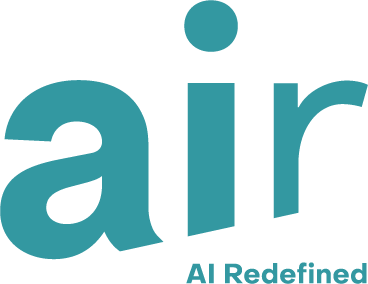Our Human-Machine Teaming Journey
One of our beliefs as a company is that human-machine teams can outperform humans alone and machines alone. Here’s how our capabilities are putting the promise of human-machine teams into real-life industrial use cases.
Imagine an officer overseeing human pilots who needs to be sure of the safety and performance of the crew on reconnaissance missions in environments with many UAV. How might that officer leverage the efficiency and speed of AI while keeping humans at the center of all decision-making?
It’s to help people like that officer that we built Cogment. As a quick reminder, AIR’s Cogment is an open-source orchestration platform that enables multiple agents—ML, RL, and heuristic—to interact in real time with human experts for continuous training.
This post explains how our Cogment-powered human-machine teaming software has evolved over time. We’ll also talk about how Cogment teams help protect human safety by leveraging sophisticated machine learning techniques in defense and aerospace contexts. Finally, we’ll give you a preview of where we’re planning to take this technology next.
Flames
Our first work with human-machine teaming involved a project from 2019 that was done with an earlier version of our Cogment platform. This project led to what we called our “Flames” proof of concept. This scenario showcases the value of human-machine teams in the context of fighting wildfires. Humans supply the contextual knowledge, while drones can be in multiple places at once. In this first proof of concept, you can see drones scouting fires and prioritizing which ones should be tackled first. You can also see the humans overseeing the drones in real time, sometimes guiding them.
That same year, we turned this “Flames” proof of concept into a 3D demo using the Unity game engine. It’s the same AI logic, but in a much richer environment, and importantly demonstrated how our core technology can easily accommodate different tech stacks and environment implementations. Cogment is capable of this kind of flexibility without any change being required with regards to how agents learn and collaborate with other entities, like human users or symbolic AI agents.
You can read more about the Flames demo and its relevance to human-machine teaming here.
Airborne collaborative pilots
The Flames proof of concept showcasing human-machine teaming caught the attention of Thales, which became one of our first customers. Our work with Thales helped accelerate their roadmap and unlock new challenges, thanks to an initial project called ACP (airborne collaborative pilots). The goal of this project was to enable drones to work collaboratively to search for and map out multiple layers of radar and adversarial pilots alongside a human pilot that had to navigate those complex layers.
The special contribution of Cogment to this use case was to enable multiple drones to adapt to human behaviors in real time, whether the drones were antagonistic or part of the team. The human team members not only gave the drones positive and negative rewards, but could also steer the drones in a more complex fashion based on where the initial radars’ positions were believed to be. That’s one of Cogment’s signature strengths in human-machine teaming: unleashing the full power of human knowledge and context inference in AI training to go beyond what can be encoded in the data or in the models to which AI agents are traditionally limited.
Confidential product
Our work on human-machine teaming continues with a confidential project, which was previewed at an academic conference earlier this year. In this active collaboration, Cogment enables drones to identify different tiers of danger to human safety and gives them the ability to request different tiers of human authorization accordingly. This sophisticated system perfectly showcases how Cogment’s human-machine teaming capabilities draw on the complementary strengths of humans and AIs.
We’ll be announcing more about our product capabilities in this area down the road, so stay tuned.
European FCAS
The demand for human-machine teaming capabilities like ours is growing stronger by the minute. As an example, consider the FCAS program, a landmark initiative led by France, Germany, and Spain to build the combat air system of the future. Human-machine teaming is one of the core strategic goals of FCAS, and Cogment helps meet that goal.
A program like FCAS has multiple technological challenges, including multi-sensor adaptation and distributed decision-making. Effective human-machine teams need to be able to work well even when drones are disconnected or a problem occurs, which is why Cogment’s decentralized framework is so valuable.
Next steps and broader vision
As much as human-machine teams are already critical to the defense industry, there is no limit to the number of other areas where it will prove just as beneficial. Cogment can be a part of that more expansive vision.
To name but a few:
Multi-domain information & decision making distribution, where multiple sources of information (both human-generated and holistically inferable data) are combined and steered by experts in real time;
Digital twins that are used as an exploration space by health professionals and AIs to generate “what if” scenarios, enabling new use cases like healthcare hyper personalization;
Critical resource management, like sustainable energy and recycling;
Adaptive learning for students in a post-pandemic era.
Key decision-makers in these domains (and others) are all surely heading towards the conclusion that the biggest challenges they face today and will face tomorrow require more than just today’s context-limited AI. These challenges will require collaboration between human expertise, adaptability, and contextual reasoning, on the one hand, and AI multi-dimensional reasoning, processing speed, and out-of-the-box exploration, on the other.
This much we know already, as AIR is already working on projects that address these challenges with new partners. The future of human-machine teams is bright, and we’re happy to be making this happen for our customers and partners.

